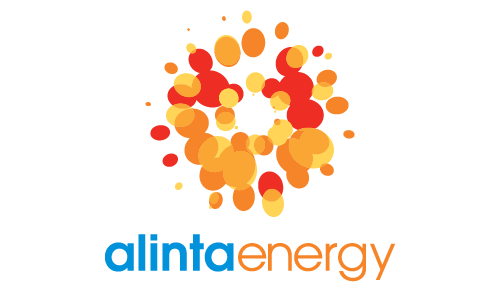What types of energy plans are available in Australia?
Depending on where you live in Australia, you will typically have the option to choose your own energy plan. You will be able to choose from two main types of plans:
Standard contract
Also known as a ‘standing offer', this is a plan your retailer puts you on by default – but it may not be the best deal available.
To protect consumers, governments set benchmark prices that limit what retailers can charge under standing offers:
- In New South Wales, South Australia and South East Queensland, this cap is known as the Default Market Offer (DMO), reviewed annually by the Australian Energy Regulator (AER).
- In Victoria, the Victorian Default Offer (VDO) serves the same role.
Market contract
This is a plan chosen by you or negotiated with your retailer. Market contracts typically offer lower rates, discounts, or flexible payment options. Reviewing market offers regularly can help you find a plan that better matches your energy usage and budget.
With Savvy, you can compare gas and electricity plans in NSW, ACT, SA, VIC, parts of QLD and TAS, as well as gas plans in WA, making it easier to find an option that suits your needs.
How do energy prices work in Australia?
Electricity and gas prices vary across Australia, with each state or territory setting its own rules for regulation and competition.
Depending on where you live, the market may be regulated or deregulated:
- Regulated: the state or territory government controls energy prices or limits competition to government-owned providers. This helps keep prices stable but reduces or removes consumer choice. In other words, you likely won’t be able to choose your energy provider – and if you can, the prices are typically the same across the board due to government regulation.
- Deregulated: the state or territory government allows private energy providers to set their own rates, creating more competition. This means you can compare plans and switch providers to get a better deal.
So, where can you take advantage of competitive energy pricing? Here's a breakdown by state and territory:
| State/territory | Electricity | Gas |
|---|---|---|
| ACT | ✓ | ✓ |
| NSW | ✓ | ✓ |
| NT | ✗ | ✗ |
| QLD | ✓ (SE QLD) ✗ (regional) |
✓ |
| SA | ✓ | ✓ |
| TAS | ✓ | ✓ |
| VIC | ✓ | ✓ |
| WA | ✗ | ✓ |
Information correct as of October 2025.
Why your energy bill is about to go up again
Electricity prices have risen over the course of 2025. In July, some households faced increases of up to 9.7% after the Australian Energy Regulator released the new DMO.
Prices are set to increase further from the beginning of 2026, as temporary government relief comes to an end. The Energy Bill Relief Fund, which provided up to $300 to households in 2024–25, will conclude at the end of December 2025, meaning households could face higher bills in 2026.
While there isn’t an imminent price rise, losing the temporary government relief will mean you’ll be having to reach into your own pocket to find another $75 every quarter.
New rules to protect energy consumers
The Australian Energy Market Commission (AEMC) has announced reforms to strengthen consumer protections and help households access better energy deals, taking effect from 1 July 2026. Key changes include:
- Limit on price increases: retailers can only raise prices once per year for market retail contracts.
- Fair treatment for vulnerable customers: this includes the removal of unfair fees and ensuring hardship customers can access their retailer’s cheapest plan if they cannot switch.
- Protection from loyalty penalties: customers won’t pay more if the benefits of their plan change or expire.
- Reasonable fees only: high penalties for late payments are removed, and fees must reflect actual costs.
What affects the cost of my energy bill?
There are a number of factors that influence your energy bill beyond state regulations and provider competition:
- Usage and supply charges: your energy bill includes two main types of charges: a charge for how much energy you use (usage charge) and another fixed charge for the cost of supplying it to your home (supply charge).
- Tariff type: different plans charge differently depending on when and how you use energy. The most common electricity tariffs are single rate and time-of-use, but other types of tariffs may also be available. Gas plans usually use a single rate tariff, though some may have seasonal or stepped pricing.
- Discounts and benefits: energy providers may offer incentives to encourage you to stay with them. These can include sign-up bonuses, pay-on-time discounts and bundled savings, which can help reduce your overall costs.
- Additional fees: many plans have additional exit fees, card payment fees or paper billing charges that can add to your bill.
- Insulation and efficiency: well-insulated homes and energy-efficient appliances reduce energy use, while older or poorly insulated homes may need more heating or cooling.
- Climate/location: homes in colder regions may have higher heating costs, and hotter regions may use more air conditioning. Rural or remote areas may also face higher supply costs.
Types of electricity tariffs
Why compare energy plans through Savvy?
100% free to use
You won't need to pay a cent to compare a variety of energy plans online through Savvy. It's 100% free.
Simple online quotes
By filling out your form and providing a recent energy bill, you can have all the facts and figures worked out for you.
Choice of leading providers
When you fill out your quote, you'll be able to consider offers from some of the leading energy providers in Australia.
Understanding your energy bill
Before comparing energy plans, it’s important to understand how your bill is structured and what the key details mean.
Under the Better Bills Guideline, introduced in 2023, energy providers must present bills in clear, plain language. They are also required to display essential information more prominently, including a “better offer” statement on the first page if a cheaper plan is available.
Your bill will show:
- How your charges are calculated: a breakdown of supply charges, usage charges and any applicable tariffs.
- How much energy you’ve used: typically displayed as total usage in kilowatt-hours (kWh) and your average daily consumption.
Other key details include:
- The address supplied
- Meter number and meter readings
- Peak and off-peak periods (applicable if you are on a time-of-use tariff)
- Supplier and retailer contact details
If your bill has increased, reviewing the details can help identify the reason, such as:
- Higher energy usage: seasonal changes or new appliances may have increased consumption.
- Tariff changes: your energy provider may have adjusted rates.
- New or additional fees: such as network or service charges.
- Underpayment from a previous bill: an outstanding balance could be carried over.
- Billing errors: incorrect meter readings or miscalculations.
By understanding your bill, you can better assess whether your current plan is still the best option or if it’s time to switch providers.
Types of energy plans
Will solar power save me money?
Installing solar panels allows you to generate your own electricity, reducing your reliance on the grid and potentially lowering your energy bills. As of 2025, over 4.2 million Australian homes and small businesses have rooftop solar.
When your system produces more electricity than you use, the excess is fed back into the grid. In return, your provider may offer a solar feed-in tariff (FiT) – a credit applied to your electricity bill. The value of your FiT depends on your location, energy retailer and electricity plan, with rates in October 2025 ranging up to 11 cents per kWh.
How quickly solar pays for itself depends on things like your energy usage, system size and electricity prices. For most capital cities, households see a return on investment within 5–7 years. Over the lifetime of a typical solar system (around 20–25 years), this can save households thousands of dollars in energy costs, depending on usage, FiT rates and electricity price rises.
Note that many retailers offer dedicated solar plans, which typically provide a higher feed-in tariff compared to standard plans, up to a limit (often between 8kWh and 12kWh each day). These plans can give you more value if you’re producing excess solar power that can be fed back into the grid.
How to switch energy providers with Savvy
-
Click to compare
We’ll connect you with our partner comparison site, Econnex.
-
Enter your details
Provide information about yourself and the type of energy plan you’re looking for.
-
Compare tailored plans
See all energy plans available at your address in one place.
-
Choose your plan
Select the plan that suits your needs and complete your switch.
What if I’m moving to a new property?
If you’re moving to a new property, a couple of extra steps will be involved. Before you move, you’ll need to ensure a meter is installed at your new address and to set up an energy account. Some providers charge a connection fee to activate electricity or gas at the property. You’ll also need to contact your current provider to close your existing account, which may involve a disconnection fee.
How to find a cheap energy plan
-
Understand your bill
Break down your charges to see where you're using the most energy. Identifying peak usage times or unneccessary fees can help you cut costs
-
Look for rebates or concessions
Government rebates and concessions can help you reduce your bill, if eligible.
-
Take advantage of discounts
It's always worth checking any sign-up discounts a provider might offer that could reduce your bill in the long or short term.
-
Compare electricity and gas separately
While bundling feels more convenient, ensuring you compare the cheapest provider for each fuel type will ensure you're not paying extra for convenience.
-
Review your plan annually
Energy prices changed often, and better deals come up regularly. Comparing plans once a year helps you stay on the most competitive rate.
Energy comparison tip
"Before I moved into my first home, I'd never had to organise my own energy plan. When the time came, I was keen to secure an affordable plan with a competitive peak-hour usage rate. That’s because my partner and I primarily work from our offices, so we'd be using pretty much all our electricity during peak times. Fortunately, getting quotes from providers online and comparing them was super simple, allowing me to find a plan that suited my specific situation."

Pick an energy plan that works for you

Energy rebates and concessions in Australia
There are different energy concessions and rebate programs available across Australia to eligible residents. These are typically available to concession card holders such as pensioners and are designed to help ease cost of living pressures, covering things like upgrades, installation and additional financial support. The type of support available and eligibility varies from state to state, so you should check your state or territory government website if you’re unsure about what rebates or concessions are available and whether you qualify.
Energy Bill Relief Fund
In the 2025–26 Budget, the Australian Government announced a six-month extension to its Energy Bill Relief Fund, which provided all Australian households with up to $300 to help reduce the cost of energy bills in 2024–25. With the extension, households and eligible small businesses will receive further energy bill rebates up to $150 from 1 July 2025 in two quarterly instalments. However, this will end on 31 December 2025.
- Retail pricing and the Default Market Offer - Australian Energy Regulator
- Victorian Default Offer - Essential Services Commission
- The Australian Energy Regulator releases new default electricity prices - Department of Climate Change, Energy, the Environment and Water
- Energy Bill Relief Fund - Department of Climate Change, Energy, the Environment and Water
- AEMC delivers enhanced consumer protections to help customers find better energy deals - AEMC
- Energy bills simplified for consumers - Australian Energy Regulator
- Small-scale installation postcode data - Clean Energy Regulator
- Best Solar Feed-in Tariffs by State and Territory - WATTever
- Solar Report - Austalian Energy Council
- State of the energy market 2024 – Chapter 6 – Retail energy markets - Australian Energy Regulator


















